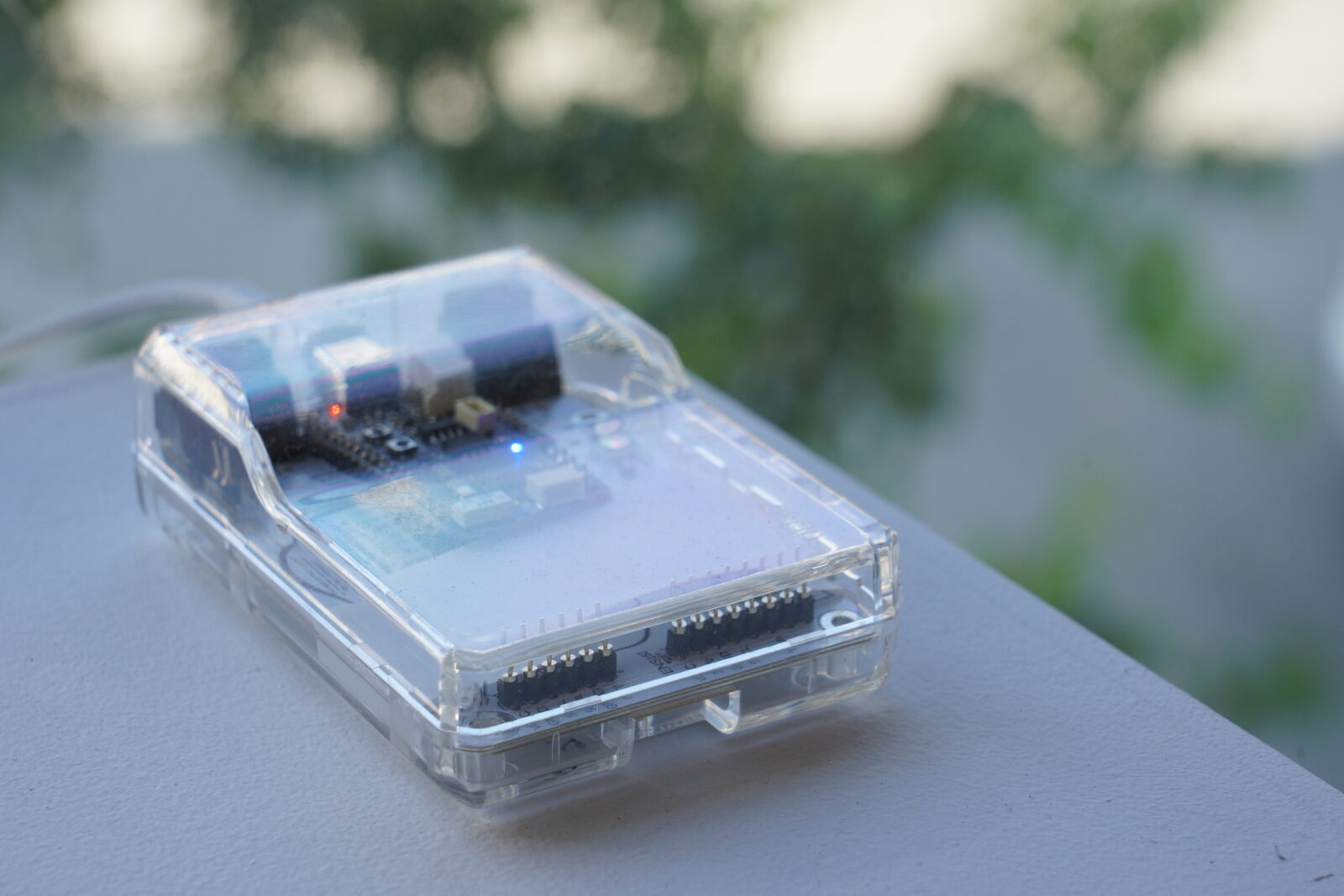Domestic Light is a multi-year, artist-driven project that explores the character of light, home, and planetary time. The project emerged in response to a simple question: what is the color of home?
From June 2023 to June 2025, a distributed network of custom-built sensors gathered continuous measurements of ambient light in domestic spaces across five continents. Installed in windowsills from Belleville to Alice Springs, from Quito to Brighton, these devices collected a time-lapse of spectral color — every five minutes, across every inhabited time zone on Earth.

Born in the long stillness of lockdown, this question unfolded into a global experiment in perception — an effort to see what usually goes unseen, and to listen for the slow data of place.
Each sensor recorded ten channels of light, extending beyond human vision into near infrared and ultraviolet. These spectral fingerprints formed a common record — part dataset, part score — that now feeds into an evolving body of work: a light and sound installation, real-time visualizations, public performances, and open-source tools for artistic reuse.
The architecture of the project draws conceptual inspiration from the Mass Observation Archive (UK, 1937), which invited people to document their daily lives as a form of collective, embodied media. Domestic Light shares that spirit — subverting the apparent neutrality of data through collaborative methods and expanded temporalities.
A Sensor Network of Hosts
At the heart of the project is a community of nearly 100 sensor hosts — artists, researchers, programmers, poets, and caretakers of domestic light. Their homes became the project’s observatories. Their participation shaped the dataset and helped define the perceptual terrain of the work.
The sensor network was coordinated across every major world region, each device connected through a low-bandwidth infrastructure designed to be simple, resilient, and reusable. Many hosts also contributed text, images, and audio, forming a layered portrait of light, time, and place.
The network will remain active through day 1001 — March 18, 2026 — with a subset of sensors continuing to stream to the public portal. You can view the interactive map of sensors still streaming here.
The core data-collection phase for the installation concluded in June 2025. The final data visualization will be available soon in the Archive section.
Collaboration and Support
Lead artist: Ian Winters
Core contributions: Weidong Yang (data & hardware), Pamela Z (composition), Daiane Lopes da Silva, Mary Armentrout, Paige Starling Sorvillo (choreography)
Key collaborators:
- Fernando Martín Velazco (communications & network coordination); Allison Holt (project manager, launch phase)
- John MacCallum, Dimitris Kyriakoudis (firmware/programming), Juliet Hadid (sensor development)
- Xing Li (Kineviz) and Dr. Nic Seymour-Smith (Sussex Humanities Lab) – additional programming support
- Installation fabrication by John Rogers; US sensor fabrication by Jeffrey Lubow, David Coll, and Juliet Hadid
- Site design by Yann Novak (3n design) and Nick Cimicula
Institutional partners: Leonardo/ISAST; San Francisco Arts Education Project (SFArtsED); Minnesota Street Project; Djerassi Resident Artists Program; University of Sussex / Sussex Humanities Lab
Acknowledgments: With thanks to the teams at SFArtsED (Pete Belkin, Emily Keeler), Leonardo/ISAST (Vanessa Chang), Sussex Humanities Lab, and Djerassi.
Support: Creative Work Fund (a program of the Walter & Elise Haas Fund, also supported by the William & Flora Hewlett Foundation); Rainin Foundation; Zellerbach Family Foundation; AWS Activate Grant; Djerassi Resident Artists Program; and many private donors.
For full biographies of the project’s collaborators, visit the Team page.